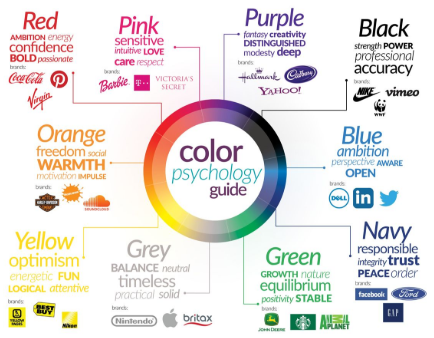5 Ways to Practice Psychology in Marketing
Psychological insight is just as valuable as technological advance. Successful marketers regularly employ psychology in appealing to consumers. There are 5 ways marketers can utilize psychology in marketing.
1. Transparency Builds Trust
Ignorance is not Bliss: Consumers want to know everything. They have an interest in knowing not only about a product, but what’s in the product, where its component parts are sourced from, how it is made, and what business processes and values guide its creation. When consumers see that you are being open with them about your business practices, brand standards, and products, they are more likely to give you their customer loyalty.
2. Emotional Branding
Now consider a business. If it were between two advertisements — one that simply talked about products, and one that made you laugh or cry — which would “wow” you? The second one, right? Story-telling especially works with ads that aim to increase brand awareness. An example is the Nike ad Dream Crazier for Women’s Day. By sharing the inspiring progress of women in sports, Nike not only delivered an ad that resonated with its audience but aligned with their brand image of strength and determination.
3. Promote Exclusivity
Cater to your customer’s ego by making them feel special if they were to purchase your product. By making your product somewhat unreachable (through limited editions or offers), you can increase the desire and urgency for it.
4. Take Advantage of FOMO
One of the trademarks of social media is that people want to be part of events as they unfold. FOMO refers to the Fear of Missing Out. FOMO marketing techniques use countdowns, promote experiences, and display social proof. Take Calvin Klein’s underwear campaign, #InMyCalvins, for example. They are encouraging women and men around the world to post pictures of them in their Calvins, with the hashtag.
5. Color Psychology
Yep, I said it. Different colors actually make you feel different emotions. Color plays a major role in evoking emotion. Have you ever walked into a room and immediately (and inexplicably) felt some type of way? This is called color psychology, and a many of businesses and organizations use it. Sports teams choose jersey colors that excite their players and audiences. Therapists paint their offices to instill tranquillity their patients, and movie producers design the color scheme for posters and trailers that provoke feelings of fear or surprise.
The same goes for brands. Consider the Coca-Cola red or Starbucks green. Red evokes strong feelings such as love, excitement, and joy. In the case of Coca-Cola, red portrays positive, friendly energy. On the other hand, green is often associated with harmony, balance, nature, growth, and health — all components of the Starbucks brand and “green” movement.

In Conclusion…
Across all forms of media, marketers invest money, creative energy and time into targeted messages meant to improve sentiment towards their brand, convince new audiences to buy their product and encourage existing customers to complete repeat purchases. Their success, of course, is dependent on their ability to influence customer behaviors, which makes marketing a play on consumer psychology.


